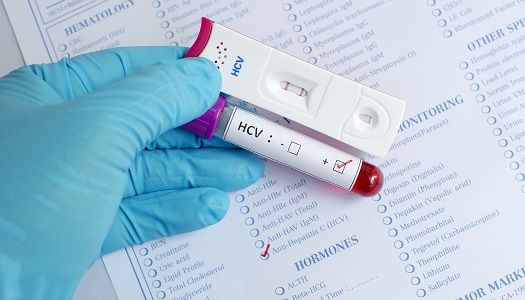Article
Study of Antiviral Hepatitis C Treatment Shows Near Universal SRV
Author(s):
The individuals in the study were all members of Israel’s Clalit Health Services in Tel Aviv, where more than 4.3 million people are enrolled.

Patients infected with the hepatitis C virus (HCV) achieved near universal sustained virologic response (SVR) in a general-population study of a direct-acting antiviral (DAA) therapy that included participants with cirrhosis and those who’d undergone previous HCV treatments.
The individuals in the investigation were all members of Israel’s Clalit Health Services in Tel Aviv, where more than 4.3 million people are enrolled.
The patients, with HCV genotype 1, were given a regimen of dasabuvir/ombitasvir/paritaprevir/ritonavir (Viekira Pak, AbbVie Inc.) from Jan. 1, 2015 to Nov, 31, 2015, according to the report published in PLOS One on July 7.
The efficacy study was the first done with a diverse group of general population participants as large as that available in Clalit Health Services (CHS), according to researchers led by colleague Maya Leventer-Roberts, deputy director at the Clalit Research Institute,
The researchers, in their retrospective observational cohort study, set out to determine whether the so-called "3D protocol" treatment would be effective in a group where the exclusion criteria found in randomized control trials weren’t present. They noted that while DAAs have shown “dramatic results in clinical trials,” their effectiveness in a broader group hasn’t been determined.
“Trials have usually selected participants who do not necessarily represent all those infected with HCV,” the researchers wrote.
The team studied 564 Clalit members with HCV who had been treated regardless of co-morbidities, age, sex, socioeconomic status, years from first diagnosis and previous treatment regimen.
Their average age was 61.9 years old, and 52% were male. The prevalence of diabetes in the group was 31.7; another 70.3% were overweight or obese. Cirrhosis was present in 41% of participants, of whom 52.8% had stage 4 fibrosis.
The patients were given a single tablet of 250 mg of dasabuvir twice a day and two tablets of a combination of 12.5 mg of ombitasvir, 75 mg of paritaprevir and 50 mg of ritonavir once a day. Those with genotype 1b with compensated cirrhosis and genotype 1a without cirrhosis or with compensated cirrhosis also received ribavirin. The course of treatment was either 12 weeks or 24 weeks.
Of those who participated, 74.8% (416) had follow-up viral load testing at 10 or more weeks after the end of treatment. The SVR rate for those tested was 98.8%, the researchers said.
“These findings are consistent with virological response rates in previously reported phase III clinical trials results for 3D protocol in select subpopulations,” they said.
Of the five patients who did not achieve SVR, the only common factor was that four of them had less than 80% adherence to the prescribed medication regimen, the study found.
Among the study’s limitations, the authors noted that the 148 participants who were not assessed for SVR may have caused an overestimation of the treatment’s effectiveness. However, the characteristics of this group were similar to the assessed group, the authors said. A second limitation was a lack of information on side effects from the 3D protocol.
A longitudinal follow-up would help determine whether SVR persists and if the risk of complications associated with chronic HCV infection will be reduced., the authors said.
One researcher, Marius Braun, reported receiving consulting and personal fees and travel grants from companies including AbbVie.
The study, "Effectiveness of dasabuvir/ombitasvir/paritaprevir/ritonavir for hepatitis C virus in clinical practice: A population-based observational study," was published online in PLOS journal this month.
Related Coverage
"Immediate Priority": The FDA's Revamped Opioid Regulation
Drug-resistant Strains of Hepatitis C Identified Through Deep Sequencing
Fruitful Study: Compound in Plums Inhibits Hepatitis C Virus Entry
2 Commerce Drive
Cranbury, NJ 08512
All rights reserved.





